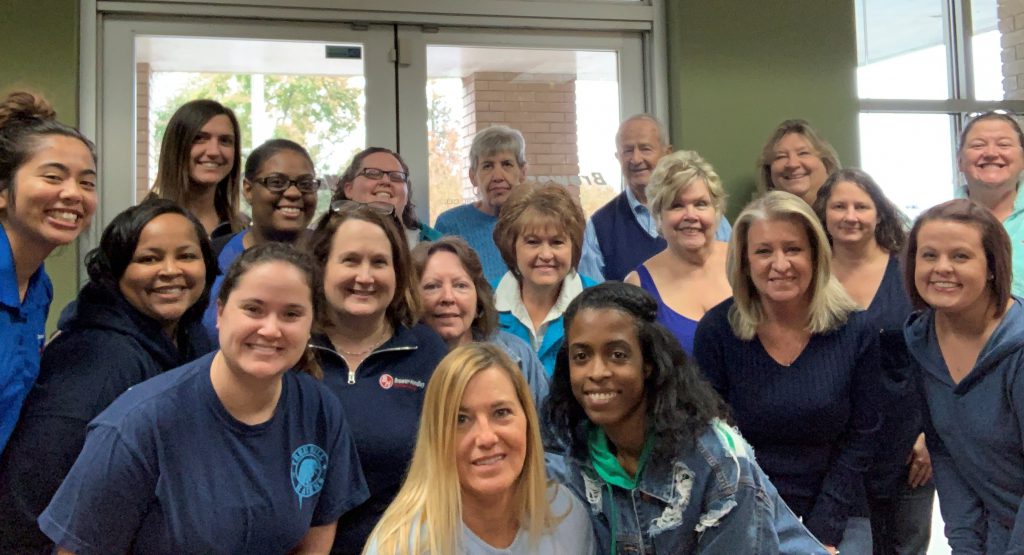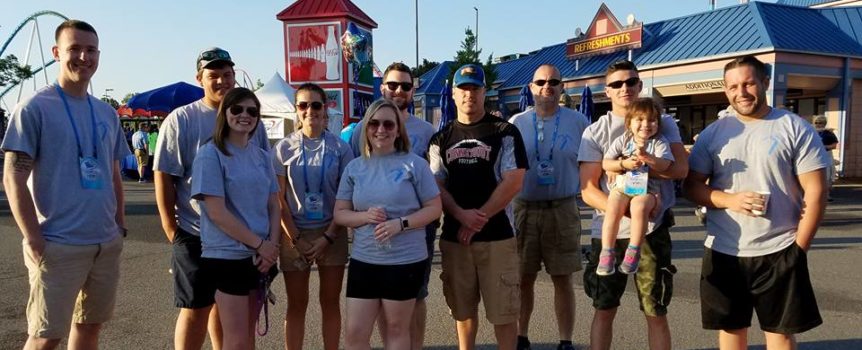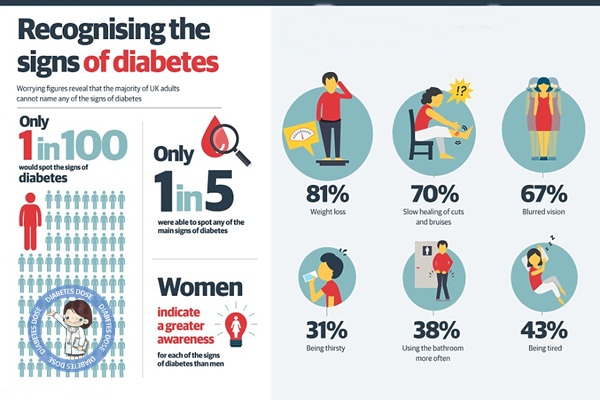C

On November 14, 2018, Brewer-Hendley staff wore blue to help raise awareness and to support those who have been affected by diabetes.
Did you know that according to the Centers for Disease Control and Prevention that over 30 million people in the US have diabetes? Of that 30 million, 1 and 4 don’t know they have it.
Diabetes mellitus describes a group of disorders that cause increased blood sugar (glucose) levels in the body. Glucose provides energy for your brain, muscles, and tissues. There are two types of diabetes, type 1 and type 2. Type 1 is generally detectable in adolescence and is diagnosed with those who do not produce insulin. Type 2 diabetes is diagnosed when an individual’s body does not respond to insulin well and in turn, stops making enough insulin.
Type 1 and type 2 diabetes is contactable both as an adult and in youth. The risk of developing type 1 diabetes is higher than all other severe chronic diseases during childhood. With the scope and effects of diabetes at large, there is still no known cure to either Type 1 or type 2 diabetes.
To bring awareness to this chronic disease, we sat down with Brewer-Hendley Oil Co. very own Megan Scott, Office Manager, to discuss why bringing awareness to diabetes is so important and how it has affected her day to day life.
Happy belated National Diabetes Day, Megan! To kick things off, can you talk about how diabetes has affected you?
In May of 2016 my daughter, Kinsley, was diagnosed with type 1 diabetes at the age of one and a half. Leading up to the diagnosis, I started to notice that throughout the day Kinsley would drink a ton of water. Every night before she went to bed, she would chug 3-4 sippy cups of water. When I would try to tell her no, she would cry and throw a fit until I gave her the water.

Megan Scott’s daughter Kinsley Huggins age 4.
Since she would drink so much water late at night, she would constantly wet the bed. Even with a diaper and a pull up on, the bed wasn’t just a little wet, but rather soaked. I knew that the amount of water she was drinking combined with the amount in which she wet the bed was abnormal.
One day when I got off work, Kinsley threw a huge temper tantrum because she was hungry. My initial though was that because she was close to two years old, this was simply a “terrible two’s” moment. When we got home, I decided to fix pizza, but when it was time to eat, Kinsley ate 5 pieces of pizza and still asked for more. Now mind you, she was only one and a half, so the volume of food she was eating had me worried. Up until that day, we had done a little bit of research of her symptoms on the internet, but I was very much in denial about anything that we were reading.
After her day of binge eating, I posted on Facebook explaining her symptoms and asked for advice. Although no one directly identified diabetes as the cause, most recommended that I take her to the doctor. We called the doctor that day to make an appointment as soon as possible. Within the same day of calling the doctor, Kinsley had to be rushed to the hospital. When we got there, the doctor informed us Kinsley had a blood sugar of 600. Keep in mind that the normal blood sugar for children her age is 80-100. After that, she was diagnosed with type 1 diabetes in May of 2016.
I can’t imagine what life is like having such a young one in the house with such a terrible chronic condition. Could you describe a regular day in the Scott household?
To check Kinsley’s glucose levels, we can prick her finger anywhere between 10 and 15 times, depending on what type of day it is. Regular days are her favorite because I let her sleep in. On a good day, the schedule goes like this:
Morning
- As soon as she wakes up, I’ll check her blood sugar to see where she’s at and depending on her levels I will give her a dose of insulin.
- After checking her glucose levels, I’ll feed her breakfast. The amount of carbs she eats determines how much insulin she will need after her meal.
- Then, I keep an eye on her continuous glucose monitor to make sure she doesn’t crash. If she crashes, then adjustments must be made to her insulin. Since we must be so meticulous, we keep a notebook of everything. This means every prick she does, every vitamin she takes, every food she eats, how many carbs she ingests, we make sure to write everything down. We even keep all her favorite foods in the front of her notebook, so if she goes to anyone’s house, they know what to give her.
Afternoon
- Check sugar, give insulin, feed lunch, check carbs, give insulin, monitor, record everything in book, nap time.
- After lunch, she takes her nap. We’ve noticed that Kinsley will start crashing during nap time, so you can imagine how fun it is to wake a sleeping baby, but you got to do it.
Evening
- Check sugar, give insulin, feed dinner, check carbs, give insulin, monitor, record everything in book, bed time.
- Finally, again on a good day, we check her insulin once before she goes to bed, again at 10:00 pm, once more at 1:00 am, and last at 4:00 am. Finally, after her 4:00 am check, we set our morning alarms at 5:30 pm and restart the day.
What makes things even more difficult is if anything changes with her body or lifestyle, a growth spurt, sickness, stomach virus’s etc., the effects will always be worse because it inherently affects her blood sugar or glucose numbers. In turn, her schedule will be totally off, and we must adjust accordingly.
Wow, sleep certainly does not exist in your household! As illustrated by your daily routine, having to take care of someone who is diabetic at such a young age is extremely difficult. What is some advice you would give to others who may have recently had someone they love diagnosed with diabetes?
Stay strong and talk with other parents that are going through the same things as you. Don’t get me wrong, some days I just want to sit down and cry because this little, innocent, girl beside me can’t help what she’s going through. However, with that pain comes a lot of strength. I draw so much strength from her, especially when it comes to me not wanting to do something as small as a flu shot.
Along with staying strong and talking with parents, be an example for your children. If you don’t expect your kids to eat candy every two seconds, don’t sit in front of them and eat a huge bag of sweets. You must be their support system because you’re all they have.
Do you have suggestions on ways that people can get involved and support?
An organization who is always looking for support and donations is the Juvenile Diabetes Research Foundation (JDRF). What they do is raise money all year to be donated to help find a cure for diabetes. They offer different fundraising opportunities, but one of my favorites is the JDRF One Walk held at Carowinds each year. Since my daughter has been diagnosed, we have not only participated but have helped raise money by selling shirts or even blankets. JDRF truly is a great organization to help raise money or volunteer your time.

Brewer-Hendley Employees participating in the JDRF Walk for the Cure 5k in April of 2017
If nothing else, help spread the word about the effects that diabetes can have. Prior to having a daughter, I grew up with a set of twins who both had diabetes. I saw what they went through, but I really didn’t understand the impact until a loved one had it. Don’t wait until one of your loved ones becomes affected.
Let’s find a cure today!
